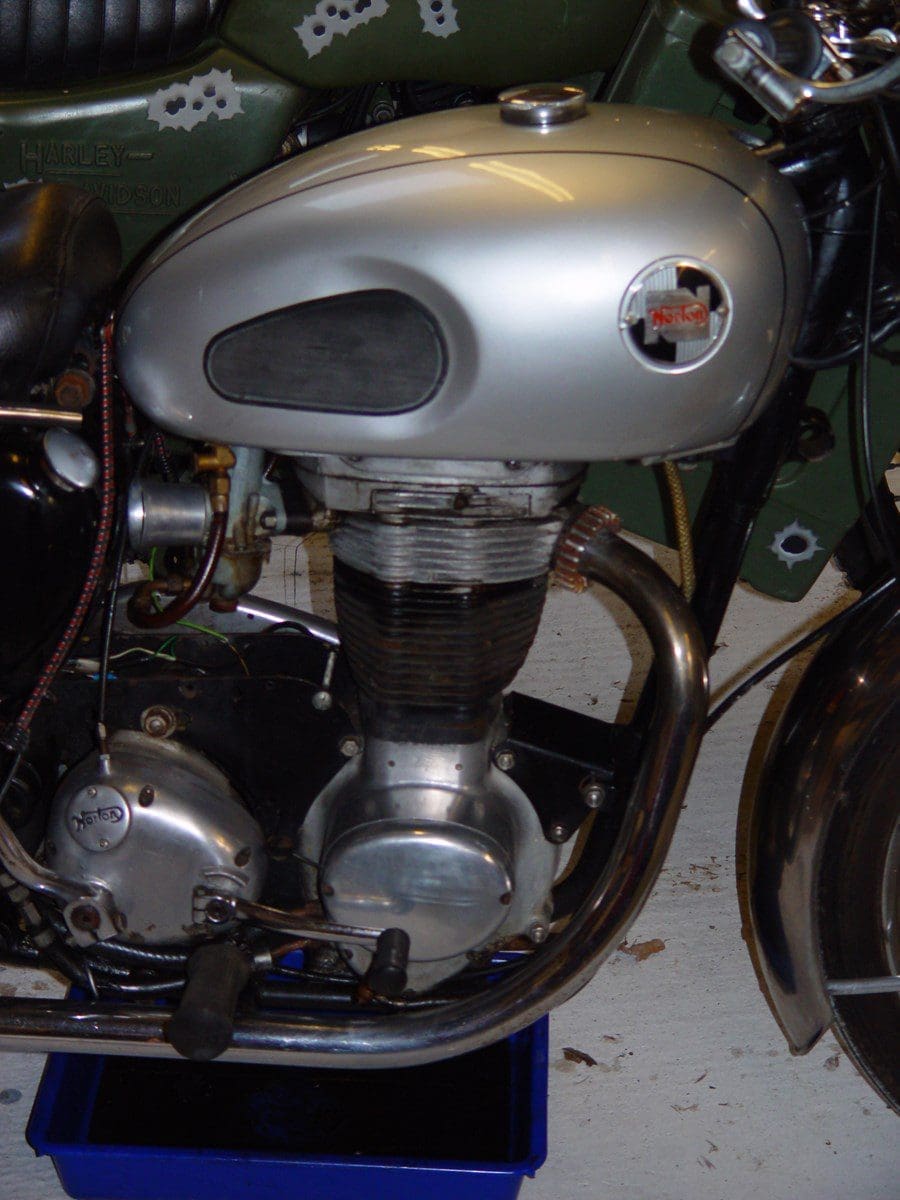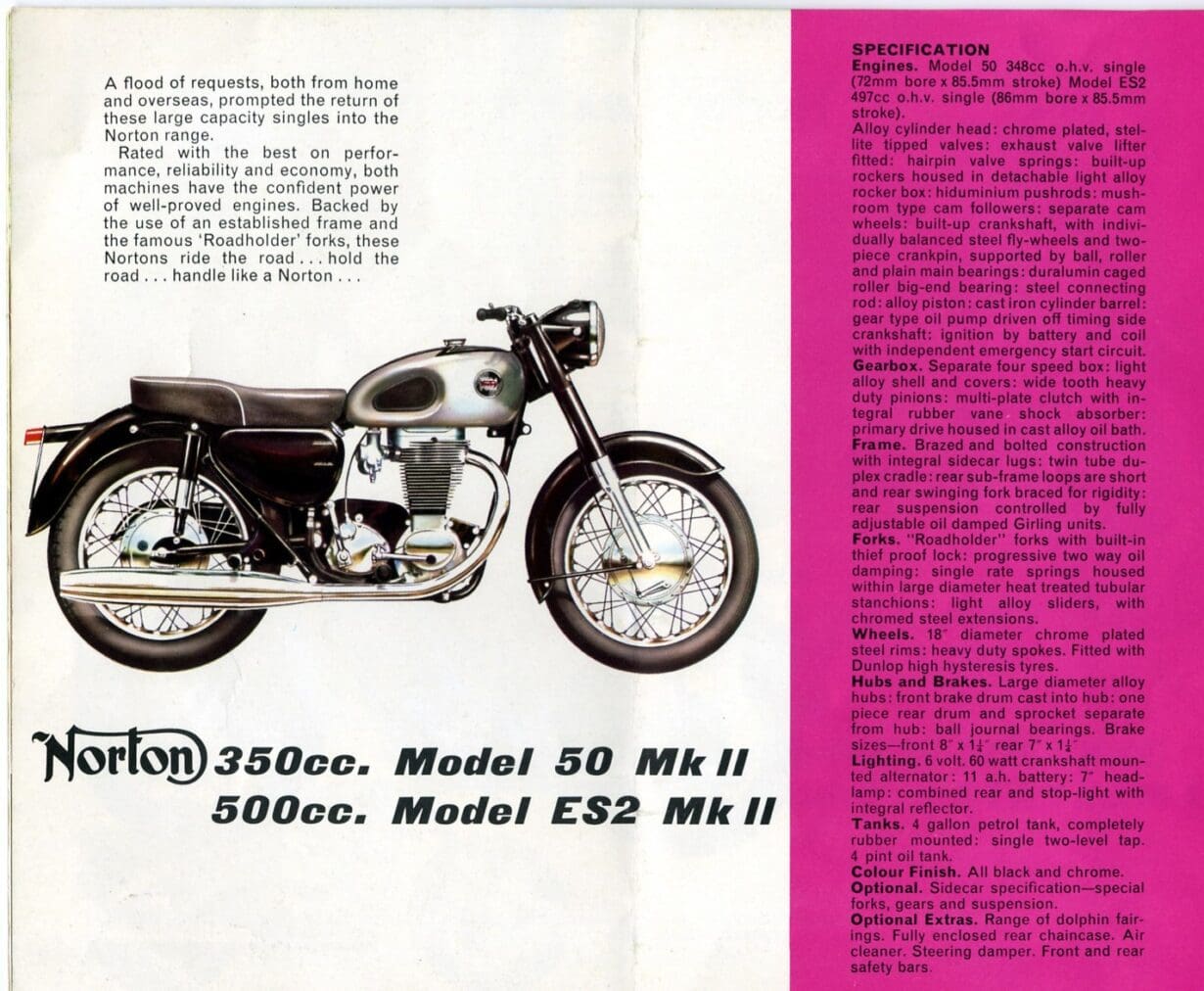No matter how much (probably useless) information you acquire, there is always more. Frank Westworth looks back on a life of lore…

One of the many joys of sporting an anorak of the deepest hue is that no matter how much you learn … there is always more. I have just depressed myself by working out how long I’ve been a stalwart AMC fan, and fell to wondering how it is that such arcane knowledge can be so rewarding to learn, and can form a passion which survives all others, though the decades grow longer.
I started riding AJS in 1970, and Matchless in 1971. This shows two things. First; I am unbelievably old. This is plainly not true, as somewhere in my heart there is a dark-haired slender youth aged about 19. Hmm. Second; it shows that I have been riding AMC for over three and a half decades. Thirdly (all good pairs come in threes); it shows that I am stupidly conservative. If the latter wasn’t the case, then I would have moved on, as almost all riders of my elderliness have, and would have forsaken AJS and Matchless grey porridge for something more impressive; faster, shinier, more attractive to gurls … that kind of thing.
It’s true that The Shed contains bikes from marques other than the big AMC twosome, although the majority of those are Nortons, all bar one or two of them from that marque’s post-Bracebridge Street phase. Several of those Nortons in fact are Plumstead pounders, including a couple of the excellent and happily under-rated lightweight (in some senses) twins – one of which has an electric start! – and a couple of them are entirely bogus.
I’ve been intrigued for more years than a chap could be expected to remember by the curious mix’n’match approach adopted by AMC’s otherwise sane marketing types as the gates of the mighty Plumstead complex started to pull shut for the last time. And I’ll try not to repeat myself too much!
It should never have been a mystery that The Management decided to slot the mighty Norton Atlas engine into Matchless bicycles. Two simple reasons make this approach entirely logical: the Norton engine should have been cheaper to build then the Matchless, because of its single camshaft, simple drives (chains cheaper than gears), and less complex crankshaft (two main bearings cheaper than three). It was also happy to operate at 750cc capacity, something neither version of Matchless’ own G15/45 engine appeared to do. Having said that, I’ve ridden a few G15/45s, including that belonging to former Jampot Editor Chris Read, and they’ve been fine. However, one of those – not Mr Read’s – was original, hadn’t been carefully rebuilt, and despite having very few miles on its clock it blew oil from every joint. And when Bruce Main-Smith wrote up his tale of a G15/45 prototype offered to him by Jock West, he called the story ‘Blown Up Like A Bag’, which may tell us something!
So we can agree that lumping the Atlas donk into the Matchless bicycle was a sensible idea. Also sensible was the notion of rationalising the wheels, brakes and forks, ditching the AMC Teledraulics and fairly feeble brakes in favour of the Roadholder forks and rather more impressive Norton 8” anchor.
What was harder to understand was the fact that AJS and Matchless heavyweights benefited from new, improved Matchless brakes for the 1963 season only! Why on earth did that happen? And indeed, how did it happen? Was someone asleep at the back when the 63/64 ranges were being planned back in 1961 or so? If someone knows the answer to this oddity, I would love to hear it.
Meanwhile, the AMC management had decided to axe the singles from their Norton range. OK. Singles, particularly heavy singles, weren’t setting the showrooms alight, and although Norton’s impressive racing pedigree had been established almost entirely with single cylinder machines, any connection between a Manx and a Model 50 was tenuous, to be kind about it. And the Norton Dominators were selling well enough, too, so concentrating production on the twins certainly made sense.
One area in which the venerable big bangers still performed well was in the world of the scramble. In those pre-Moto-X days, giant chaps man-handled giant sweating singles through oceans of mud, in much the same way that previous generations of superheroes had slain dragons, all of it while lesser souls gazed on incredulously and chewed popcorn. Which is probably the rationalisation behind the development work carried out on the AJS and Matchless singles which saw them gaining Norton-type gear oil pumps, proper main bearings and the like, and which saw those improvements filtering into the AJS and Matchless heavy roadster singles for the 1964 season. It made no sense having more than one design of single engine being built side-by-side by then; the days when companies like the pre-AMC Norton concern would build singles in ohv, sidevalve and ohc forms were sensibly long past, and the AMC management knew that.
So why, pray, did they re-introduce Norton heavy singles for the 1965 season? And why did they accomplish that strange move by simply sticking silver paint and Norton badges onto otherwise inoffensive Matchless petrol tanks?


This idea was so spectacularly unsuccessful that in a lifetime of anorak fascination with AMC oddities I have seen just three Norton ES2 Mk2s, and five or six Norton Model 50 Mk 2s. They are so unusual that I decided to hunt down examples for myself, to see whether there is some special Norton magic about these late short-stroke trad AMC bangers. There isn’t. The Shed contains one of each, and they are Matchless to the core. Except in one tiny but fascinating detail.
Nortons were numbered differently to Ajays and Matchlesses, with engine and frame numbers lining up on Nortons, but not on pre-G15 Ajays or Matchlesses. Someone at Plumstead made a decision. I wonder whether it involved vast committee sessions, or whether a single bloke down on the factory floor took the decision on his own?
The problem with an anorak, especially an AMC anorak, is that the more questions you answer, the more questions you raise; the more you learn, the more you want to learn. And so it goes on, around and around…


